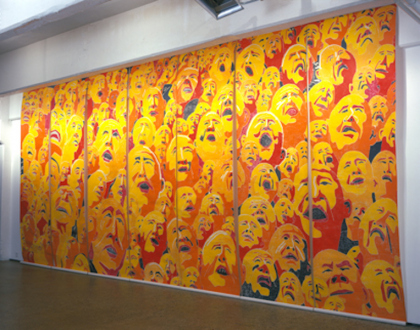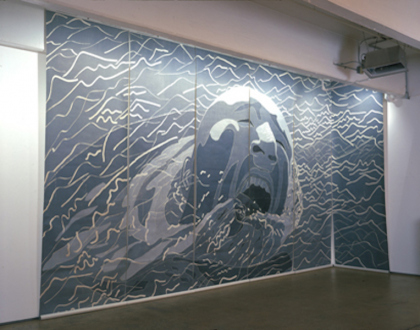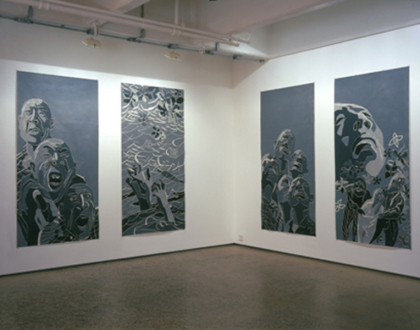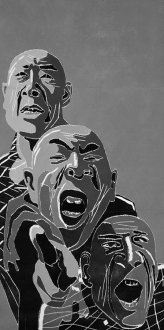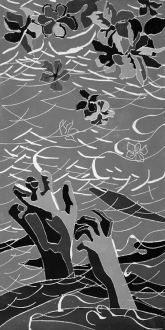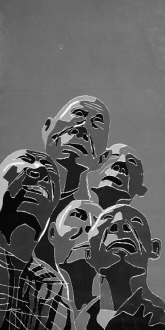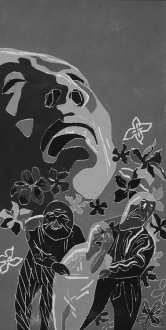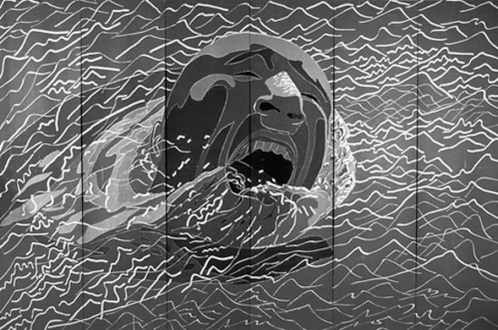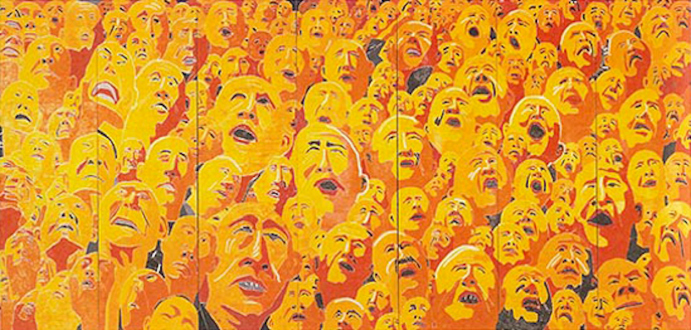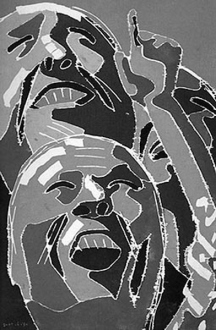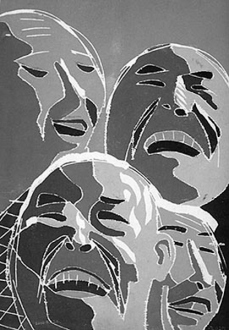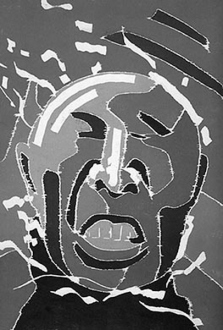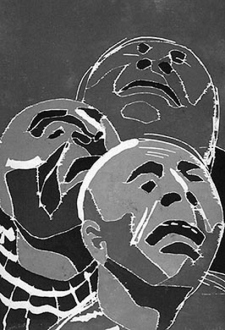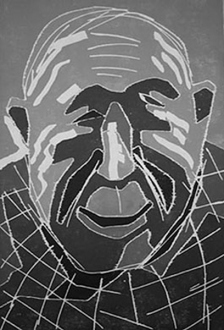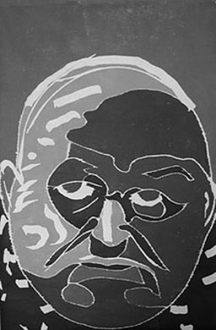Fang Lijun – Woodcuts (Works)
Selected Works
Fang Lijun
Fang Lijun – Woodcuts Press Release
Thomas Erben is pleased to present an exhibition of woodcuts – shown for the first time in the US – by the widely acknowledged Chinese artist Fang Lijun (b. 1963). In 1989, while still a student, Fang’s work was included in the now legendary China Avant/Garde exhibition, Beijing. Participations in major surveys followed including the Venice Biennale (1993 and 1999), China! Kunstmuseum Bonn (1993), and Inside Out, Asia Society, New York (1998). His painting Series 2, No. 2 appeared on the cover of the New York Times Magazine, December 1993, to illustrate That could free China, Andrew Salomon’s article about the art of the new generation.
On view will be two monumental woodcuts, which were created from numerous panels, printed on rice paper, mounted on scrolls and combined into billboard size. In the iconic Swimmer, 1999, exhibited at the Shanghai Biennale of the same year, a huge head, gasping for air in an expanse of water, makes us wonder whether we witness a drowning or a struggle for survival. Untitled 2002/03 included in Alors la Chine? at the Centre Georges Pompidou, Paris, last autumn depicts an all-over field of upward looking faces – variations on a type – caught in between beatific adulation and exasperation. In contrast to the Swimmer’s monochromatic range of grays and black, the second brims with hues of yellow, red and purple.
There will also be a set of four medium sized prints (each 96″ x 48″) which combine Fang’s iconography of bald heads, impersonal figures – caught between widely differing emotions and expressions, water and flowers into a potential narrative. All woodcuts are expertly crafted, using engraving and cutting of the plate as techniques. Whereas scroll formats cite the pre-revolutionary tradition of classical ink painting, size and appellative character reference propagandistic aesthetics.
Fang studied from 1985-1990 at the Department of Prints of the prestigious Central Academy of Fine Arts, Beijing, before turning to painting. He now alternates between the two media, which share formal as well as iconographic similarities such as two-dimensionality, lack of shading and a distinct feeling of alienation. His imagery is insofar ‘Chinese’ and ‘real’ as it is sourced from the immediate visual environment including movies, advertisement, folk art, propaganda posters, photographic self-portraits or snapshots. Strategies of distortion, decontextualization and reconfiguration however allow Fang to arrive at a visual imagery, which is ambivalent and disturbing, changing the direct message of his sources into a ‘modified reality’ (Monica Dematte).
In addition to the venues mentioned above, his work was exhibited at: China Art Museum Beijing, China (2003); Ludwig Forum für Internationale Kunst, Aachen, Germany (2002); Espace Culture Francois Mitterand, Paris, France; National Art Museum, Beijing, Art Museum Shanghai, Shanghai, Modern Art Museum, Chengdu, Art Museum Guangzhou, Guangzhou, all in China (2001); Max Protetch Gallery, New York; Stedelijk Museum, Amsterdam, the Netherlands (1998); Haus der Kulturen der Welt, Berlin, Germany (1998 and 1997); The Japan Foundation, Tokyo, Japan (1996); to name a few.
